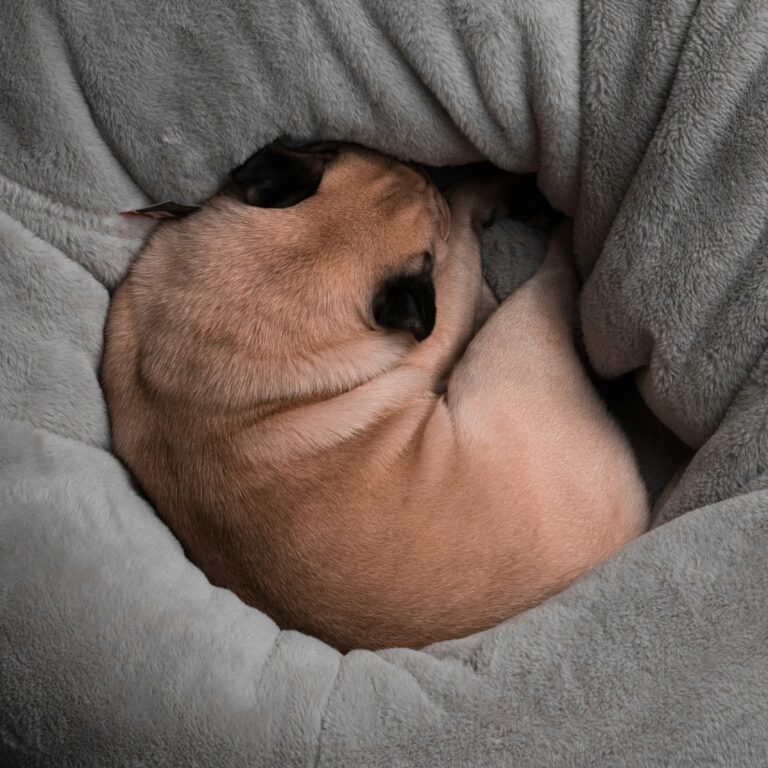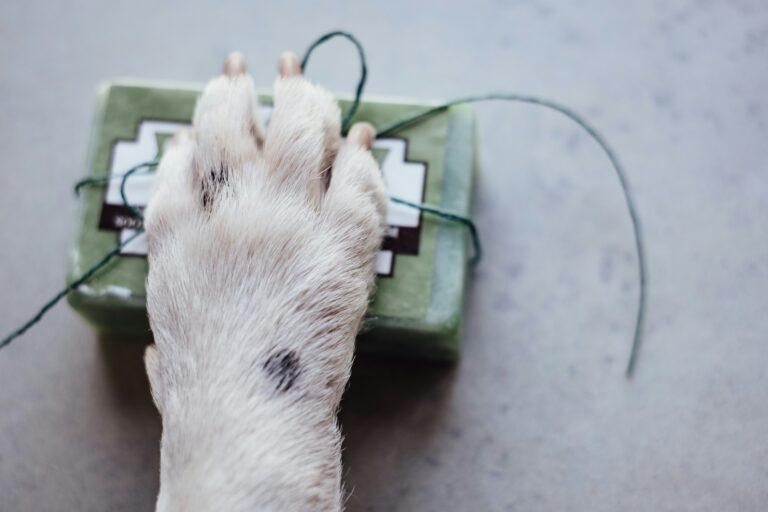In the realm of canine companionship, there’s a certain charm and allure to the pint-sized powerhouses known as teacup breeds. These diminutive dogs may be small in stature, but they pack a hefty punch when it comes to personality and companionship. Today, we delve into the captivating world of these micro pups, examining the specific care requirements that set them apart from their larger counterparts.
From Chihuahuas to Poodles and every breed in between, teacup dogs have grown significantly in popularity. However, along with their adorable stature comes a unique set of needs and challenges. These petite pets require specialized care and attention to maintain their health and happiness. This post will provide you with comprehensive insights into the distinct needs of teacup breeds, shedding light on everything from feeding and exercise to grooming and health issues.
When it comes to their health, teacup breeds are indeed a special case. Their tiny size often makes them susceptible to certain health conditions that larger dogs are generally immune to. As an owner or prospective owner, it is crucial to understand these potential health challenges in order to provide your little buddy with the best care possible.
Stay tuned as we navigate through the unique care needs of teacup breeds, providing you with valuable tips and advice to ensure your miniature friend thrives. Uncovering the mighty world of these tiny breeds has never been more exciting. Prepare to embark on a journey that will equip you with the knowledge and understanding to care for your teacup breed, ensuring a happy, healthy and fulfilling life together.
Understanding the Characteristics of Teacup Breeds
Teacup breeds are not officially recognized as a distinct classification by major kennel clubs like the AKC (American Kennel Club), but the term “teacup” is widely used to describe dogs that are bred to be significantly smaller than the standard size of their breed. These dogs typically weigh less than five pounds when fully grown and stand under nine inches tall.
While their petite size is appealing, it is important to realize that it can come with various health and ethical considerations. Some breeders may prioritize size over health, resulting in fragile puppies with genetic defects. Always ensure you adopt or purchase teacup dogs from responsible breeders who prioritize the health and well-being of the animals.
Unique Feeding Needs
Feeding a teacup breed is a delicate balancing act. Due to their high metabolism and tiny stomachs, teacup dogs are prone to hypoglycemia (low blood sugar), which can be life-threatening if not addressed quickly. Providing proper nutrition through a thoughtful and structured feeding regimen is one of the most critical responsibilities for owners of these miniature companions.
Understanding the nutritional requirements specific to teacup breeds is essential. Because they have limited reserves of fat and glycogen, teacup dogs cannot store energy as effectively as larger dogs. This makes it vital to provide them with a steady source of calories and nutrients throughout the day to maintain stable energy levels and prevent metabolic crashes.
Key Feeding Guidelines:
Small, Frequent Meals:
Teacup breeds should be fed small, manageable portions multiple times a day — usually between 3 to 5 meals. This strategy helps maintain consistent blood sugar levels, preventing dangerous dips that could lead to hypoglycemia. Skipping meals or irregular feeding times can severely impact their delicate systems. It’s often recommended to keep a consistent feeding schedule and avoid extended periods of fasting.
High-Quality, Nutrient-Dense Food:
Selecting the right food for a teacup breed is crucial. Choose premium, small-breed formulas that are rich in high-quality proteins, healthy fats, vitamins, and minerals. The kibble size should be small enough for tiny jaws to manage comfortably. Many brands offer formulas specifically tailored to meet the caloric density and nutrient requirements of small dogs, providing them with the fuel they need without overburdening their petite digestive systems.
Hydration:
Dehydration can quickly become a serious problem for teacup breeds. Always ensure that your dog has constant access to fresh, clean water. For some particularly tiny or picky teacup breeds, adding a bit of low-sodium broth to their water can encourage them to drink more frequently, helping to maintain proper hydration levels.
Monitoring Weight:
Because teacup dogs are so small, even slight fluctuations in weight can have significant health implications. Regularly weigh your dog — using a kitchen scale if necessary — and adjust food intake accordingly. Both obesity and being underweight can lead to serious problems, including exacerbating congenital heart issues, breathing difficulties, or putting undue stress on fragile bones and joints.
If unsure, always consult your veterinarian to create a personalized feeding plan based on your dog’s age, weight, medical history, and activity level. A tailored approach ensures your teacup receives exactly what they need to thrive without unnecessary risks.
Additional Feeding Tips for Teacup Breeds
Choosing the Right Food Texture:
Some teacup breeds may have difficulty chewing dry kibble, particularly puppies or seniors. In such cases, incorporating wet food or soaking kibble in warm water can make eating easier. Wet foods are generally more palatable and easier to chew but should still meet high nutritional standards.
Food Temperature Matters:
Cold food can be unappealing or even upsetting to sensitive stomachs. Serve food at room temperature or slightly warm (not hot) to stimulate appetite and support digestion.
Supplement Wisely:
Sometimes, veterinarians may recommend supplements such as omega-3 fatty acids for coat health, probiotics for digestion, or additional vitamins. However, supplementation should always be done under veterinary guidance, as overdosing certain vitamins and minerals can harm tiny dogs.
Handling Picky Eaters:
Teacup breeds are notorious for being picky eaters. If your dog refuses to eat, it is important not to allow too much time to pass without nutrition. Try offering different protein sources like chicken, turkey, or fish to stimulate appetite, or consult your vet for appetite-stimulating options if picky eating becomes persistent.
Special Considerations for Puppies and Seniors:
- Puppies: Teacup puppies are extremely vulnerable to hypoglycemia. Puppies may need feeding as frequently as every 2–3 hours during the early months. Emergency high-calorie nutritional gels are often kept on hand for immediate use at the first signs of low blood sugar.
- Seniors: Older teacup dogs may have dental issues that make chewing difficult. Switching to a softer diet or specially formulated senior dog food can help ensure they continue receiving balanced nutrition without discomfort.
Signs of Hypoglycemia in Teacup Breeds

Owners must be vigilant and recognize early symptoms of hypoglycemia, which can escalate rapidly:
- Lethargy or weakness
- Uncoordinated movements or wobbling
- Shivering or trembling
- Glassy eyes or vacant stare
- Seizures
- Loss of consciousness
If you suspect your teacup dog is experiencing hypoglycemia:
- Administer a small amount of corn syrup or honey orally if the dog is conscious and able to swallow.
- Seek immediate veterinary care to stabilize blood sugar and investigate underlying causes.
Safe Treat Practices
While it’s tempting to spoil these tiny dogs with treats, treat-giving must be approached thoughtfully:
- Treats should constitute no more than 10% of their total daily caloric intake.
- Choose healthy treats designed for small dogs, ideally those fortified with beneficial ingredients like glucosamine for joint support or dental chews for oral hygiene.
- Avoid human foods like chocolate, grapes, raisins, onions, garlic, and anything high in fat or sugar, as these can be toxic to dogs.
Reward your teacup with affection, praise, and safe, small treats to reinforce positive behavior without risking their health.
Final Thoughts on Feeding Teacup Breeds
Feeding a teacup breed requires diligence, patience, and a proactive approach to nutrition management. Their tiny size makes them incredibly vulnerable to dietary imbalances, but with the right feeding routine, high-quality food choices, and careful monitoring, your petite companion can lead a vibrant, energetic life.
Understanding and meeting their unique feeding needs is a critical step in being a responsible and loving teacup dog owner. By creating a stable feeding routine, watching for signs of trouble, and maintaining open communication with your veterinarian, you are setting your miniature friend up for a long, healthy, and joyful life by your side. 🐾❤️
Exercise and Activity
Teacup dogs may be small, but they are full of energy! Exercise is essential not only to maintain their physical health but also to stimulate them mentally.
Safe Exercise Ideas:
- Short walks: Gentle daily walks on soft surfaces like grass are ideal.
- Indoor playtime: Safe, supervised indoor play is important to protect them from larger pets and rough environments.
- Puzzle toys: Mental stimulation is equally important. Interactive toys that encourage problem-solving can help keep their sharp minds busy.
Caution:
- Avoid overexertion. Due to their small size, teacup dogs can easily become fatigued.
- Be mindful of weather conditions. Extremely hot or cold temperatures can quickly impact their health.
Grooming and Hygiene
Regular grooming is crucial for teacup breeds, not only to maintain their appearance but also to protect their sensitive skin and coat.
Grooming Essentials:
- Brushing: Most teacup breeds, particularly those with long hair like Yorkies and Pomeranians, require daily brushing to prevent matting.
- Bathing: Use a gentle dog-specific shampoo and bathe them every 3–4 weeks.
- Nail trimming: Tiny nails can quickly overgrow, so regular trims are essential.
- Dental hygiene: Small breeds are particularly prone to dental disease, making daily teeth brushing a must.
- Ear cleaning: Check and clean their ears weekly to prevent infections.
Always use grooming tools that are appropriately sized for very small dogs.
Health Concerns Specific to Teacup Breeds
Teacup breeds are at higher risk for several health conditions due to their delicate size:
- Hypoglycemia: As mentioned, low blood sugar can strike rapidly.
- Heart defects: Congenital heart problems are common in teacup dogs.
- Bone fragility: Their small, lightweight bones are prone to fractures.
- Respiratory issues: Narrow tracheas can cause breathing difficulties.
- Liver shunts: Liver dysfunction is more frequently seen in tiny breeds.
Preventive Care:
- Regular veterinary visits: Early detection is key.
- Vaccinations and parasite control: Stay on schedule with immunizations and flea/tick prevention.
- Microchipping: Given their small size, if a teacup dog gets lost, they are at higher risk. Microchipping adds a layer of protection.
Home Safety for Teacup Breeds
Because of their tiny stature, teacup dogs require an exceptionally safe home environment.
Tips for Teacup-proofing Your Home:
- Secure furniture: Ensure furniture is stable and won’t tip over easily.
- Use pet stairs or ramps: Help them safely access beds or sofas.
- Keep floors clear: Small objects can become choking hazards.
- Block off unsafe areas: Use gates to prevent access to stairs or dangerous zones.
Additionally, educate children and visitors on how to handle your teacup dog gently and respectfully.
Socialization and Training
Teacup dogs can sometimes develop “small dog syndrome,” where they become fearful, yappy, or even aggressive without proper socialization.
Effective Strategies:
- Positive reinforcement: Use treats and praise to encourage good behavior.
- Exposure: Gradually expose them to different people, pets, sounds, and environments.
- Obedience training: Basic commands like “sit,” “stay,” and “come” are crucial for safety and confidence-building.
Patience, consistency, and gentle methods are essential when training such delicate creatures.
Traveling with Teacup Dogs
Teacup breeds are ideal travel companions due to their size, but they require special preparations.
Travel Tips:
- Use a well-ventilated, appropriately sized carrier.
- Bring essentials like food, water, toys, and bedding.
- Plan frequent breaks during road trips.
- Avoid extreme temperatures during travel.
- Carry medical records in case of emergencies.
Conclusion
In conclusion, “Tiny but Mighty: Navigating the Unique Care Needs of Teacup Breeds” emphasizes the significance of understanding and catering to the special needs of these miniaturized versions of popular dog breeds. Despite their miniature size, they pack a punch in terms of the attention, care, and love they need.
Their small size doesn’t make them less of a pet. On the contrary, it increases the need for specialized care, from their diet to their exercise and healthcare routines. Understanding their unique needs is crucial to ensuring their long and healthy life. To raise a teacup breed successfully, you’ll need not only a big heart but also a well-informed mind.
Throughout this guide, we’ve discussed crucial aspects like feeding, exercise, grooming, safety, health challenges, and socialization. Each element plays a vital role in creating a nurturing environment where a teacup dog can thrive. Investing time and effort into learning their needs not only improves their quality of life but strengthens the unbreakable bond you share.
Remember, when it comes to teacup breeds, they might be tiny, but they are mighty in spirit, loyalty, and affection. In return for the immense joy they bring, it is our responsibility to offer them a safe, loving, and attentive home.
If you’re considering adding a teacup breed to your family, ensure you’re well-prepared to meet their unique care requirements. With commitment, knowledge, and love, these little dogs can live long, joyful lives by your side. 🐾💖



